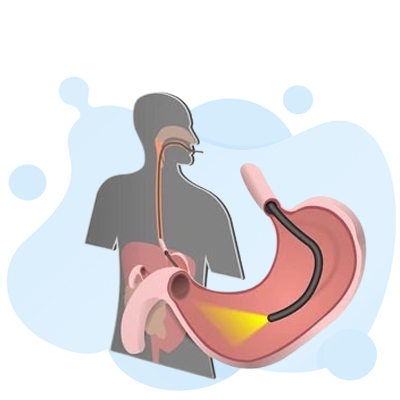
This comprehensive guide provides an official overview of the CER (Certified Endoscope Reprocessor) Test, which validates an individual’s knowledge and competency in endoscope reprocessing. The CER certification ensures that healthcare professionals responsible for decontaminating and disinfecting endoscopic equipment possess the necessary skills to maintain patient safety through proper procedures.
This article will explore the CER certification, its importance, eligibility requirements, study resources, test format, and strategies for successfully passing the exam.
The CER (Certified Endoscope Reprocessor) certification is a professional credential awarded to individuals who demonstrate their knowledge and competency in endoscope reprocessing. This certification is essential for healthcare professionals, such as nurses, technicians, and sterile processing personnel, who are responsible for the proper decontamination, disinfection, and sterilization of endoscopic equipment.
The CER certification validates an individual’s expertise in the endoscope reprocessing field. It ensures that healthcare providers have the necessary skills and knowledge to maintain patient safety through proper endoscope decontamination procedures, endoscope disinfection protocols, and endoscope cleaning validation processes. Achieving the CER credential demonstrates a commitment to professional development and a deep understanding of flexible endoscope reprocessing best practices.
Proper endoscope reprocessing is crucial in the healthcare setting to prevent the transmission of infections and ensure patient safety. Endoscopes are complex medical devices that come into contact with mucous membranes and sterile body cavities, making it essential to follow rigorous endoscope reprocessing guidelines and endoscope reprocessing training protocols. The CER certification equips healthcare professionals with the knowledge and skills to effectively decontaminate and disinfect endoscopy equipment, minimizing the risk of endoscopy equipment sterilization failures and endoscope reprocessing competency assessment gaps.
To be eligible to take the CER exam, candidates must meet specific educational and experience requirements set by the certifying organization. These typically include a combination of endoscope reprocessing training, hands-on experience in endoscope decontamination procedures, and successful completion of endoscope reprocessing certification programs. The eligibility criteria ensure that individuals seeking the CER credential have the necessary qualifications to perform endoscope disinfection protocols and maintain endoscope cleaning validation processes in their healthcare settings.
Preparing for the CER (Certified Endoscope Reprocessor) test requires a comprehensive understanding of endoscope reprocessing practices and protocols. Candidates can access a variety of study resources and materials to help them prepare for the exam, including:
The CER (Certified Endoscope Reprocessor) test is designed to assess an individual’s knowledge and competency in various aspects of endoscope reprocessing. The test typically consists of multiple-choice questions covering the following key areas:
| Topic | Description |
|---|---|
| Endoscope Reprocessing Fundamentals | Covers the basic principles, terminology, and regulatory requirements for endoscope reprocessing |
| Endoscope Cleaning and Disinfection | Addresses the proper techniques and protocols for cleaning, high-level disinfection, and sterilization of endoscopic equipment |
| Endoscope Inspection and Maintenance | Focuses on the inspection, testing, and ongoing maintenance of endoscopes to ensure their functionality and safety |
| Infection Prevention and Control | Examines the critical role of endoscope reprocessing in patient safety and the prevention of healthcare-associated infections |
By thoroughly understanding the test format and content outline, candidates can effectively prepare for the CER exam and demonstrate their expertise in endoscope reprocessing.
To take the CER (Certified Endoscope Reprocessor) test, candidates must first register with the certifying organization, such as the Certification Board for Sterile Processing and Distribution (CBSPD) or the International Association of Healthcare Central Service Materiel Management (IAHCSMM). The registration process typically involves submitting an application, providing proof of eligibility, and paying the required examination fee.
The registration process for the CER test is straightforward. Candidates must complete the application form, which can be obtained from the certifying organization’s website. They will need to provide information about their educational background, work experience, and any relevant certifications or licenses. Proof of eligibility, such as transcripts or employment verification, may also be required. Once the application is submitted and approved, candidates can schedule their test date and pay the exam fee.
On the day of the CER test, it is important for candidates to arrive early and well-rested. They should bring a valid photo ID and any necessary materials, such as a calculator or reference materials, as specified by the testing organization. During the exam, candidates should carefully read each question, consider all the available options, and select the most appropriate answer. Time management is also crucial, as the CER test is designed to be completed within a specified time frame.
Once candidates have successfully passed the CER test, they will receive their Certified Endoscope Reprocessor credential. To maintain this certification, individuals must renew it periodically, typically every few years. This may involve completing continuing education courses, attending workshops, or demonstrating ongoing competency in endoscope reprocessing practices. By maintaining their CER certification, healthcare professionals can ensure that they remain up-to-date with the latest endoscope reprocessing protocols, contributing to improved patient safety and infection prevention in the endoscopy setting.